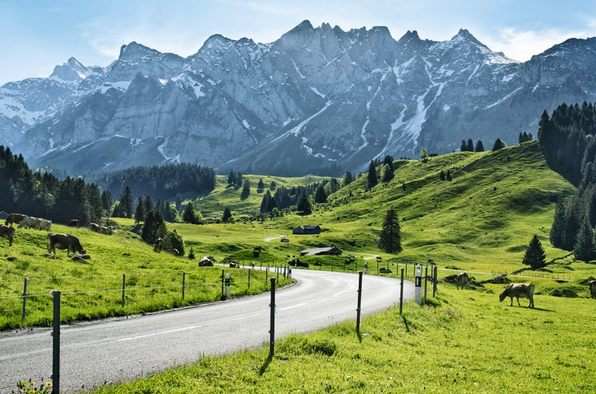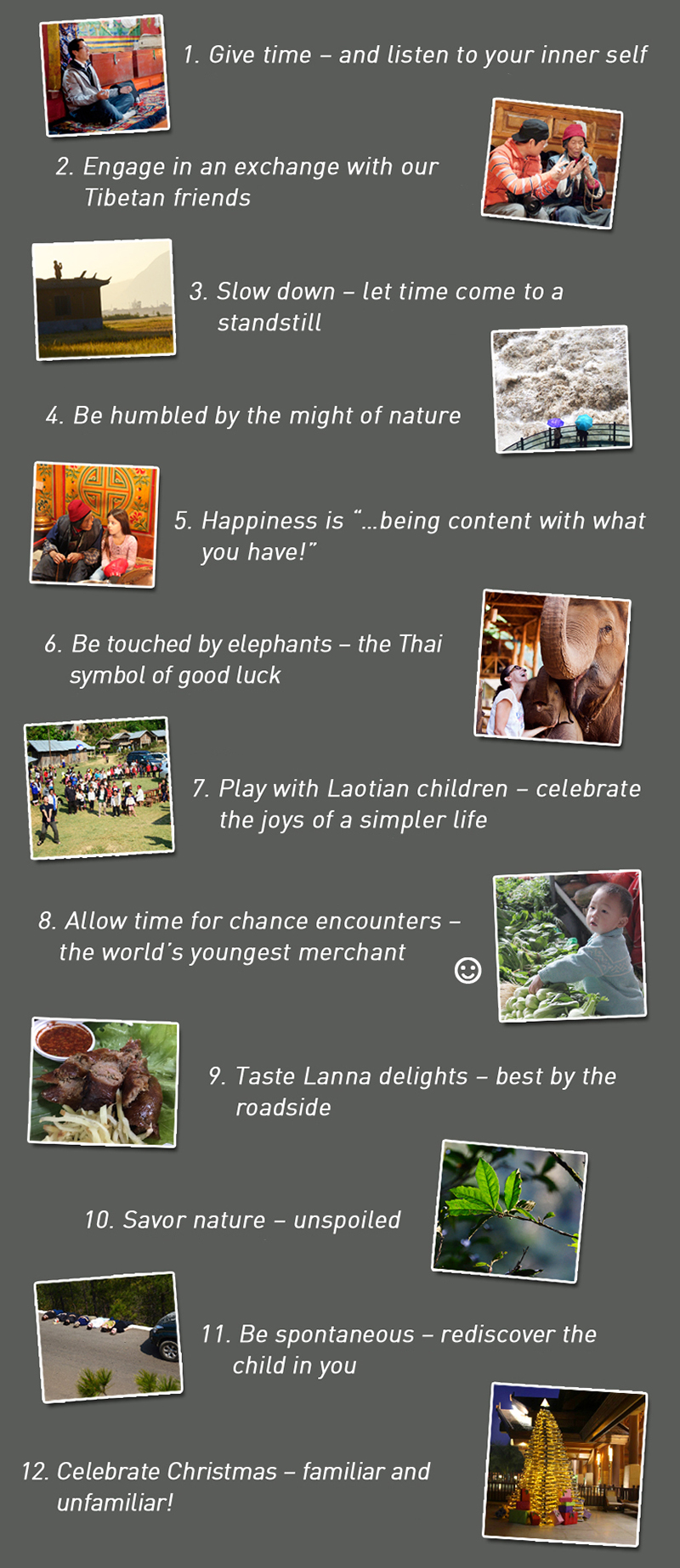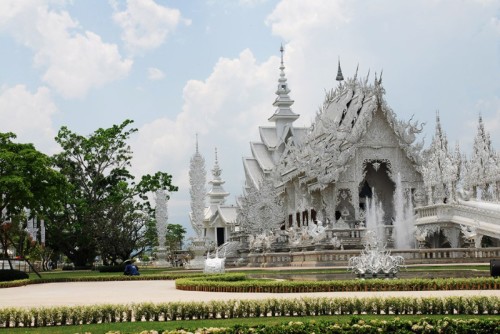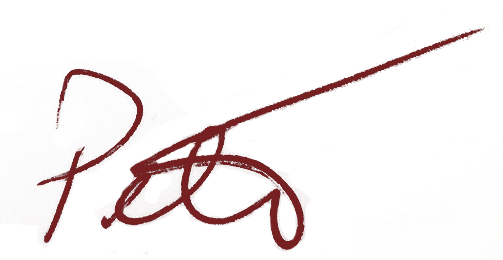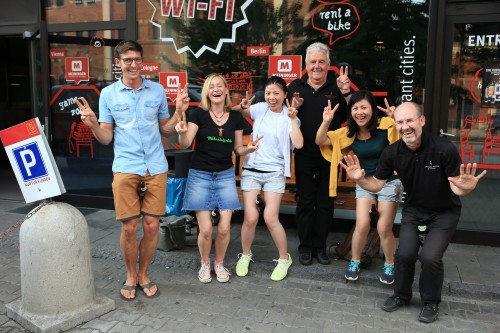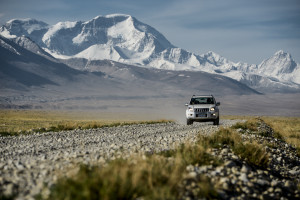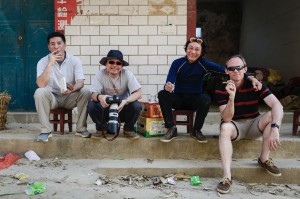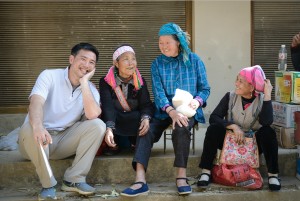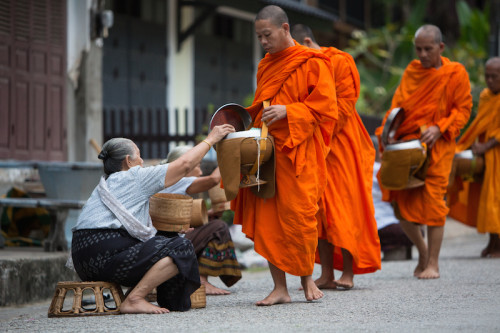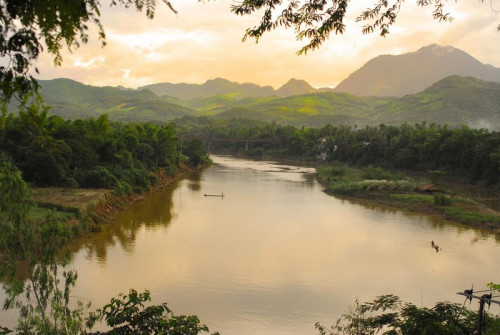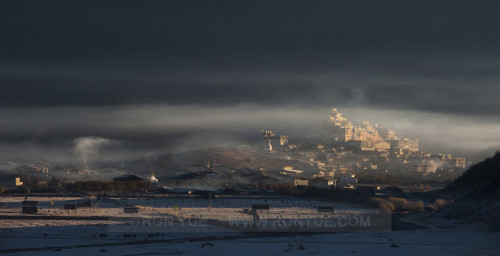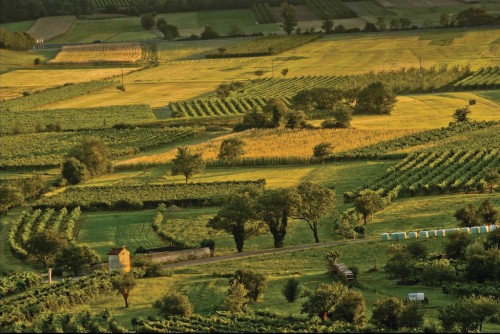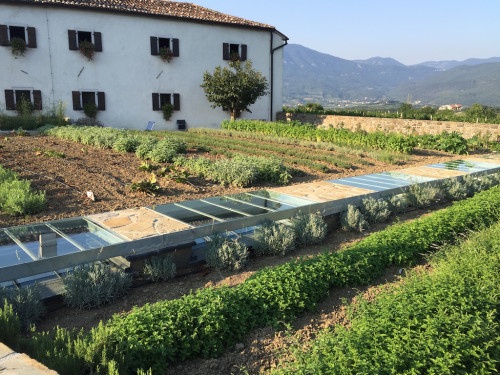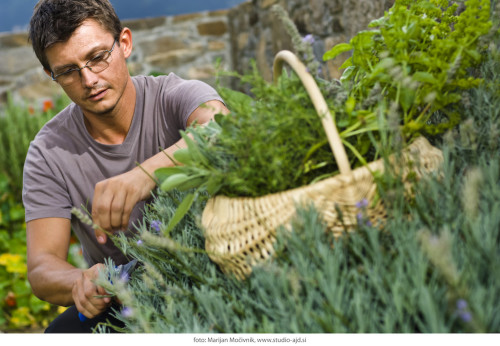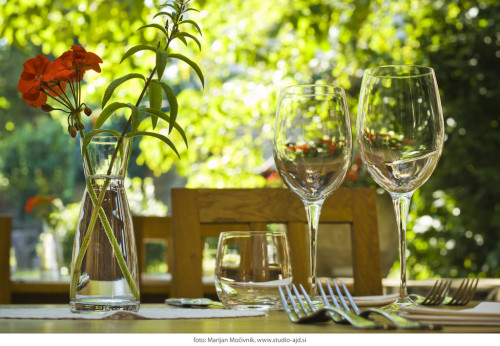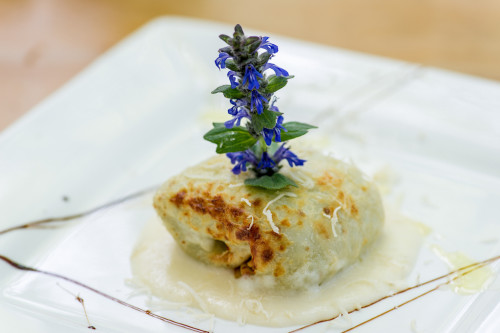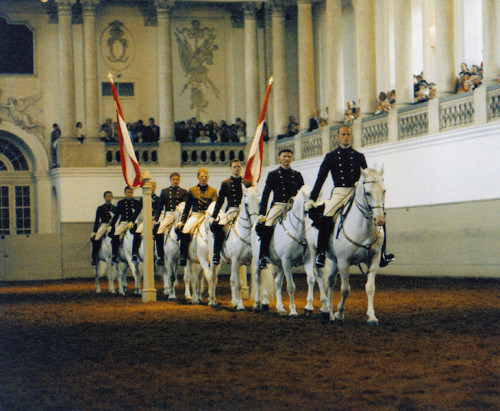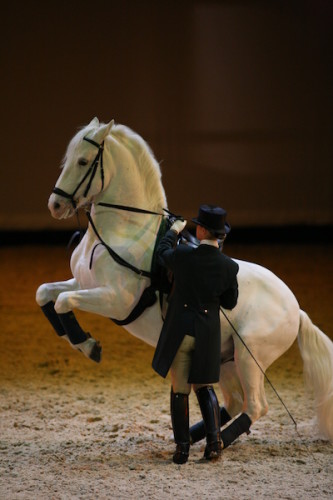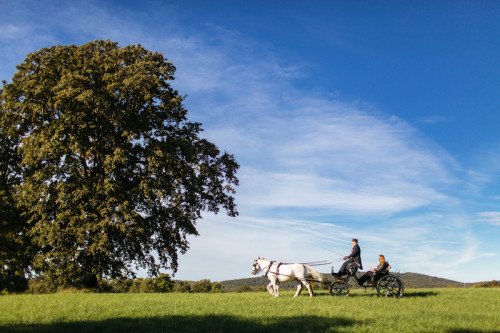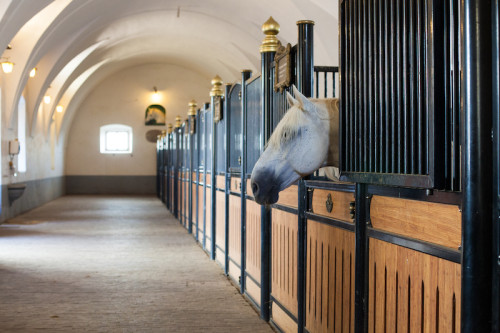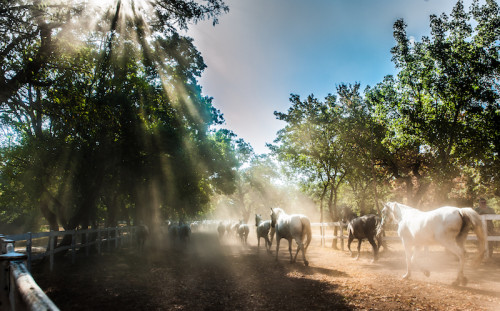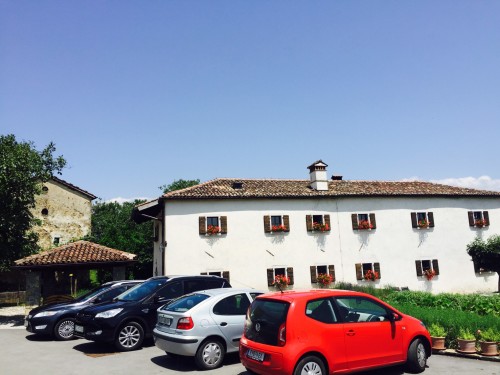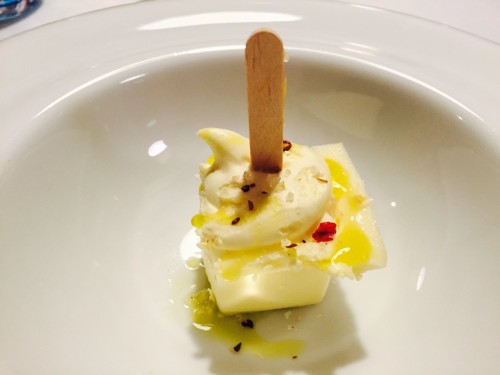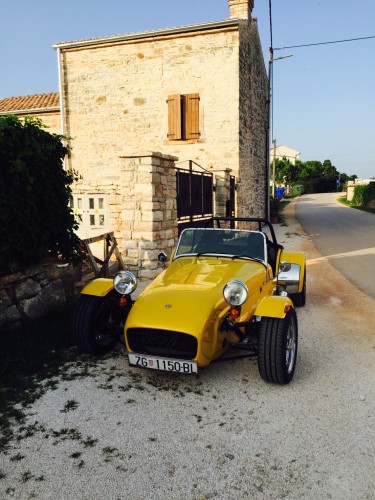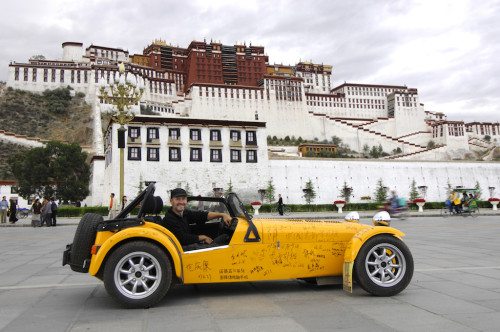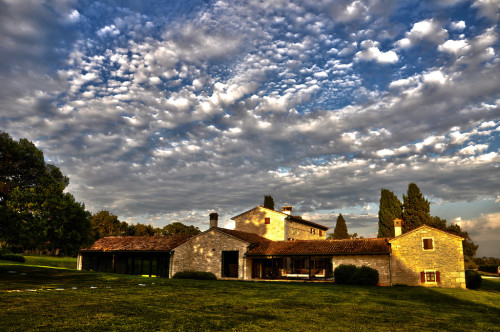Tag Archives: Driving holiday
Posted on 30 Apr, 2018
Last month, we shared our favourite mountain passes in Tibet. This month, we’re looking to Europe, with its classic mountain drives in the Alps and beyond…
Posted on 2 Jul, 2017
Photographer Ron Yue tells us what he’s most excited about seeing in Burma on our new photography holiday, Burma through a Lens
Posted on 5 Dec, 2016
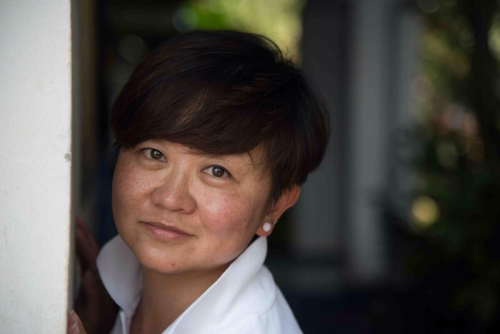 Everyone who has been on an On the Road trip with our super-guide Nancy Wu will understand why she is our first On the Road Star. With a wicked sense of humour, bags of energy, an encyclopaedic knowledge of Yunnan’s people and places, and peacock dancing skills that are in a class of their own, she has given many of us happy memories from our journeys with her. I sat down to talk with her about her and her work:
Everyone who has been on an On the Road trip with our super-guide Nancy Wu will understand why she is our first On the Road Star. With a wicked sense of humour, bags of energy, an encyclopaedic knowledge of Yunnan’s people and places, and peacock dancing skills that are in a class of their own, she has given many of us happy memories from our journeys with her. I sat down to talk with her about her and her work:
First of all, why did you become a tour guide?
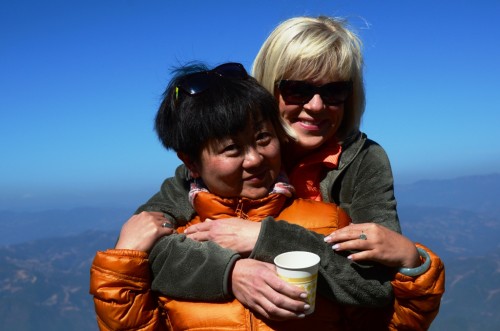 Not the reason you might think! I’ve always liked using language as a tool and working with people – the worst job for me would be working alone in an office. When I was a child I would always sign up for public speaking opportunities and debate teams, and originally I wanted to be a lawyer. But my father told me that I would never look the part, because I’m too short! That might sound silly, but Chinese people care about things like that, so I started thinking about other options. By then I was studying English at university, and tourism was taking off in Yunnan, so I decided to train as a tour guide. My mother used to organise trips for a workers’ organisation, so perhaps I took some inspiration from travelling with her when I was little…
Not the reason you might think! I’ve always liked using language as a tool and working with people – the worst job for me would be working alone in an office. When I was a child I would always sign up for public speaking opportunities and debate teams, and originally I wanted to be a lawyer. But my father told me that I would never look the part, because I’m too short! That might sound silly, but Chinese people care about things like that, so I started thinking about other options. By then I was studying English at university, and tourism was taking off in Yunnan, so I decided to train as a tour guide. My mother used to organise trips for a workers’ organisation, so perhaps I took some inspiration from travelling with her when I was little…
And now that you’ve been doing it for 15 years, what do you love most about your job?
I really enjoy introducing things that I find beautiful to my guests, and sharing with them. I learn from them and they learn from me! As we travel we all become friends and I’m able to interpret Chinese culture for them, and maybe correcting misunderstandings that people from overseas have about China.
What’s the worst part of your job?
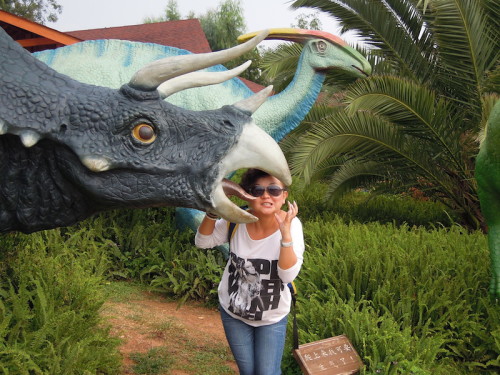 The worst part of my job is related to the best part! When I’m travelling, I often come across Chinese people doing things in an… uncultured way, just because they don’t know any better. It drives me crazy, because I want to show off the best of Chinese culture, and don’t want my guests to think that we’re all uncultured! Sometimes I can help to improve whatever it is they’re doing badly, and sometimes I end up feeling embarrassed and caught in the middle. I understand why they’re doing it, but I can also see things from my guests’ perspective. So all I can do is to try and communicate with both!
The worst part of my job is related to the best part! When I’m travelling, I often come across Chinese people doing things in an… uncultured way, just because they don’t know any better. It drives me crazy, because I want to show off the best of Chinese culture, and don’t want my guests to think that we’re all uncultured! Sometimes I can help to improve whatever it is they’re doing badly, and sometimes I end up feeling embarrassed and caught in the middle. I understand why they’re doing it, but I can also see things from my guests’ perspective. So all I can do is to try and communicate with both!
How did you learn the Dai peacock dance?
My mother liked dancing, and I often went to watch dance performances with her. So I’ve enjoyed dancing ever since I was little, but I’ve never studied formally. I just taught myself the peacock dance, but I’d be a lot better at it if I’d started when I was younger.
What are you favourite places in Yunnan?
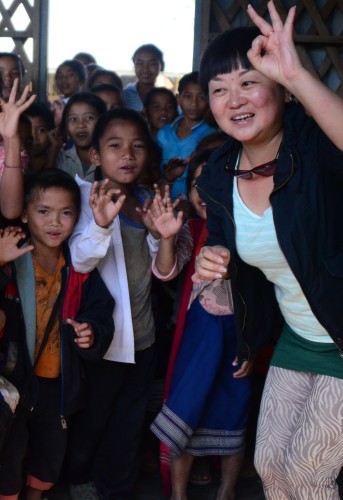 Jianshui! Jianshui is one of the places I like best – I prefer small towns with their own character to big cities. In Jianshui the people are very cultivated, the pace of life is nice and slow, and – very importantly – the food is good. Then I like Xishuangbanna (again the food is delicious) and Dali. Near Kunming, I like Shilin [the Stone Forest] and Qiongzhu Si [Bamboo Temple] the best – one is full of visitors, the other is very quiet and peaceful, and you can sit and drink tea…
Jianshui! Jianshui is one of the places I like best – I prefer small towns with their own character to big cities. In Jianshui the people are very cultivated, the pace of life is nice and slow, and – very importantly – the food is good. Then I like Xishuangbanna (again the food is delicious) and Dali. Near Kunming, I like Shilin [the Stone Forest] and Qiongzhu Si [Bamboo Temple] the best – one is full of visitors, the other is very quiet and peaceful, and you can sit and drink tea…
And which of On the Road’s itineraries do you like most?
The one with Jianshui in it! Haha… I really enjoy the drive from Jianshui via Yuanyang and Jiangcheng to Xishuangbanna, then on to Thailand [“From Yunnan to the Lanna Kingdom”]. But I also like the new Burmese itinerary, perhaps because my mother was half-Burmese…
Finally, you always seem to know the best restaurants to visit and the tastiest dishes to order – and your cooking is great too! What do you like to eat most?
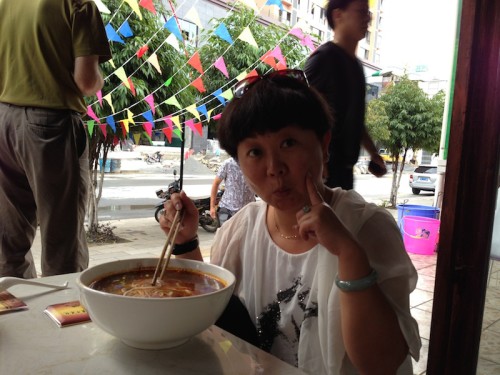 Barbecue! Spicy barbecued fish is one of my absolute favourite things to eat, but barbecue restaurants here sell lots of different dishes – rice noodles, different vegetable dishes, meat and fish. As long as it’s spicy, I love it. When Peter took me to Europe, I was dying for something good and spicy to eat! [Smacks lips.]
Barbecue! Spicy barbecued fish is one of my absolute favourite things to eat, but barbecue restaurants here sell lots of different dishes – rice noodles, different vegetable dishes, meat and fish. As long as it’s spicy, I love it. When Peter took me to Europe, I was dying for something good and spicy to eat! [Smacks lips.]
Thank you, Nancy!
Posted on 23 Sep, 2016
For many of us, the end of the year is a time for taking time off to reflect upon the year past and the year to come. For some of us, it is the time to celebrate Christmas and time for giving. Giving often means the “things”. But we believe the memories of meaningful experiences last longer…
On the way from Shangri-La to Chiang Mai in Thailand, during 12 days, here are 12 gift ideas :
Join the “gift-to-yourself-and-your-family” journey: Over Christmas and New Year!
From Shangri-La to the Lanna Kingdom – December 22, 2016
-
An unforgettable way to close out 2016 and start the new year!
-
Click here for more info
-
In a nutshell
-
What?
-
Travel from Shangri-La in Yunnan via Nothern Lao to Chiang Mai in Thailand
-
Luxury, Comfort and Adventure all in one
-
Christmas in wintry Shangri-La
-
New Year in subtropical Thailand
-
How long? 8 or 12 days
-
-
We look forward to welcoming you on what will be one of the most memorable journeys of your life!
Posted on 30 Aug, 2016
I have been working for On the Road Experiences since 2013. I started as a host…
What does a “host” do? As a journey host I oversee the whole journey from greeting guests on the first day until we all say goodbye on the last. I am responsible the service we provide and for the experiences guests enjoy; our aim is to make each journey enjoyable for all parties involved.
My role has grown over the years, and now I enjoy researching new itineraries, enhancing our existing journeys, and meeting guests before they join a trip and developing the German market. Peter gives my colleagues and I the chance to grow – sometimes it seems that every day I find myself with a new project, which makes me busy and happy!
Looking back at all the journeys I have hosted, I remember a lot of laughter and happiness, and my hard-drive is full of pictures of sunsets, beautiful landscapes and people. Two things that I can’t capture on film, though, are the hard work and long days that go into making each journey a success.
Explaining my job to friends isn’t easy, because it is not at all like being on holiday, and neither is it “just” being a tour guide. We have to work with the fact that on each journey there will be many unforeseen events along the way – hopefully these will be fun things, such as yaks on the road or coming across a colorful local festival, but they might include road closures or even landslides.
In March, for example, we got held up by market day in a small village on the way to Puzhehei, where all the roads were gridlocked with trucks both big and small.
Nobody could move until the stallholders began to clear up two to three hours later. Thinking of it now, the pictures it brings to my mind are of our guests sitting on the side of the road, relaxing – one smoking a cigar, and chatting with the market-goers.
Our drivers got stuck in, handling and coordinating the traffic while the policemen lolled about drunk on the pavement! I love that our guests and my colleagues managed to make the most out the afternoon and still find something good in a situation that wasn’t so good. It was very hot that day. As I tried to get cold drinks to keep us all refreshed, I ended up going from shop to shop as I discovered that none of the fridges were working! Finally, in a tiny shop I found cold beverages and local snacks, which I took back for us all to share.
This kind of experience is a good reminder for everyday life – of course I had all sorts of worries going through my mind: “What if we’re stuck here forever? “How long will this traffic jam last?” “What are our customers thinking?” “Will it get dark before we arrive?” “Are there any short cuts we could use?”, and so on and on… And I wished that we might have had a smoother journey on that day, but the reality is that life doesn’t always go to plan, and sometimes you just have to make the best most out of whatever happens!
Curiously, almost without fail, it is the unforeseen events, well handled, that our guests remember the most after we return home. Sometimes it’s the bends in the road that are the most memorable and meaningful!
Posted on 25 Aug, 2016
Early each morning, monks file out from the wats that line Luang Prabang’s loose grid of streets. Clasping their alms bowls, they walk, solemn and barefoot, along streets fringed with shaggy toddy palms, and past candy-coloured colonial villas and gilded temples.
Temperatures climb throughout the day, and most people retreat to the shade to sip cooling drinks and doze before venturing out again at dusk, when a vibrant night market sets up on Sisavangvong Road. Here, stallholders sell souvenirs and shake out bright silk scarves under bluish fluorescent lights as the sun sinks behind far bank of the Mekong.
As you leave Luang Prabang and set out on the road to the Chinese border, the drive punctuated by roadside villages thronging with children, any change seems faint. Three hundred kilometres away, Luang Namtha is clearly cut from the same languid, tropical cloth. Even just across the Chinese border in Xishuangbanna, people believe the same form of Buddhism, practice the same rituals, share the same traditional dress and enjoy very similar spicy-sour flavours in their food.
From Xishuangbanna, where the route of our journey Lands of Silk and Snow briefly reunites with the Mekong, the road climbs up out of the steamy basin where elephants and peacocks once strutted through the jungle, and onto the Yunnan-Guizhou Plateau. As you ascend, the air temperature drops and dries, and the vegetation changes; rubber trees and banana plantations fall away to be replaced by temperate forest and – as we approach Kunming, “the City of Eternal Spring” – fields of flowers.
North of Kunming, the pace of change picks up as you continue to climb up, past Dali and Lijiang to Shangri-La, the threshold of Tibet. From here to Lhasa our route takes us from the dramatic valleys that mark the Tibetan Plateau’s eastern fringe, crossing the Mekong again – and the Yangtze and the Salween – climbing over snow-dusted passes and swooping down through thickly forested valleys before spilling out into the broad Kyi-Chu valley on the final approach to Lhasa.
It is only by travelling overland that you can see how one land merges into the next; how the continuity of the tropics suddenly disappears as one ascends the 1500 metres between Jinghong and Kunming; how the long parallel valleys that run through northwestern Yunnan have given rise to dozens of ethnic groups and amazing biodiversity; and how Tibetan culture has overcome quite awesome geographical challenges in order to spread from Yunnan to the edge of Central Asia.
And yet while there’s change, there are also elements that bind the entire route together. From Laos to Lhasa the main religion is Buddhism – albeit of different schools. Everywhere between Dali and Luang Prabang was once part of a single kingdom in the eighth century. And the waters of the Mekong gather our journey together at several points, like a purse-string, as we travel from South-East Asia, where its waters flow, brown and stately, up to the heights of Tibet where the young river tumbles wildly out of the hills.
Pity the poor traveller who flies over all this! In our busy times of direct flights and high-speed trains, it truly is a luxury to experience a long-distance overland journey, and to see a portion of the earth’s surface up close and personal, and to meet people along your route, at every turn learning that for all that separates us, there is as much that binds us together.
Posted on 21 Aug, 2016
(For parts 1 and 2 of this 3-part series, please see “A holiday? Not exactly…” and “Impatient to run free…“)
“What do you really mean by a ‘Hidden Gem’?” people often ask me. Everyone intuitively knows what we mean, but it’s tricky to put it into words. When I try to describe my idea of a hidden gem, I say that it’s a well-kept secret, found in the most unexpected location at the most unexpected of times.
Still, that’s the kind of answer that, if it came from a politician, might make you roll your eyes and say to yourself “That’s why I hate politicians,” because it feels calculated and inauthentic. And so, often, I end up answering “I know one when I see one.” While this is still unhelpful, at least it has the merit of being completely true.
Whenever we’re researching a new itinerary, the quest is really to uncover hidden gems. From the moment I type a query into Google or e-mail a friend for suggestions to the day I finally program the address of one of my potential gems into the GPS, I am filled with anticipation that we might, perhaps, have found another one.
Back on June 23 this year, when I looked at my map of Slovenia the restaurant on our “to-do” list for the day, Majerija, looked like it was right off the highway. Thinking of greasy fast food at charmless service stations, I was almost put off visiting it. Would it be worth our while visiting it? That the restaurant is located in a village called “Slap” did little to assuage my worries.
From Lipica we turned north toward Ljubljana, before turning onto the highway to Trieste. After ascending a gentle pass, the modern highway swoops across elevated bridges and through brightly-lit tunnels into the Vipava valley, one of Slovenia’s wine-growing regions. Descending to near sea level, the temperature had risen to 35 degrees by the time we exited the highway. By this time one thing had become clear: wherever and whatever Majerija was, it wasn’t in a service station.
The road to Slap was so small that I missed the turn-off and had to do a U-turn to get back on course. Once on this little road, we saw a tiny village ahead, its diminutive skyline dominated by a church steeple. The road led through meadows, the air alive with the sound of cicadas and birds. Even though we were no more than two minutes from the expressway, it could not have felt further away. Both Pei Fen and I felt that as we drove we were not only slipping away from modern busy-ness, but also back in time.
Slap’s red, brick houses are situated on a gentle slope, and the village looks neat but still organic. Just 427 Slappers live in here. As we approached, I was filled with a mixture of apprehension and hope. It seemed highly unlikely that a restaurant worth a forty-five-minute drive could be here, in such rustic surroundings.
We drove past the church of St. Matthew and before we knew it the village was in our rear-view mirrors, and still the road kept rising and winding its way through the countryside as the road gradually narrowed futher. According to the GPS we had just another 200 meters to go to Majerija. We rounded one final corner and turned into a farmstead: if ever I’ve seen a “hidden gem” of a restaurant, this had to be it.
Majerija exists and is what it is because the owners, Matej and his wife, love what they do and because they are who they are: no attempt is made to convince others to like what they like; instead, they welcome those who, by word of mouth, love what they love.
Majerija is a collection of four 18th century buildings that were and are one home. Dark wood-framed windows, decorated with bright red geraniums, contrast against white stone walls. The buildings are surrounded by vineyards, trees and verdant undergrowth, and festooned by tangles of roses. On the day of our visit, the deep blue sky completed the image of a home completely in tune with the environment that surrounds it.
A curved walkway leads to the entrance of the restaurant. As we turned the corner we see a few wooden table with white tablecloths, crystal glasses and gleaming silverware set in the shade by the side of the house. Shortly after we sat down, Matej emerged from inside the house and handed us his menu. I knew we should order – we had so much to do in the afternoon – but I put down the menu, closed my eyes and felt that I wanted to stay there for the rest of the day.
Eventually I picked up the menu again and ordered: “Boletus pate with wild fennel flower topping and crostini”, “Roasted shank of suckling pig and traditional autumn vegetables” and “Chestnut pave, homemade vanilla ice cream and cinnamon foam”, each one a feast for my eyes and my palate.
We spent one-and-a-half hours in the hands of Matej and the lap of Majerjia, a blink of an eye, it seemed – far too short in any event. When we took our leave it was with great anticipation of the time, in September, when we can share this experience with guests because, in the end, no words can do it justice.
*************
This post concludes a series of three posts about a single day on our latest research trip, June 23. A mad day of research? Yes, certainly. A typical day on the road when we’re putting together a new itinerary? Yup! But above all, an unforgettable day!
Interested in our new itinerary? Please see here the Journey Dossier for Austrian-Hungarian Lands I: Vienna, the Adriatic, the Alps and Prague (12, 10 or 8 Days)
Posted on 19 Aug, 2016
(For part 1 of this 3-part series, please see “A holiday? Not exactly…”; for part 3, please see “I know one when I see one“.)
Ever since I was a small boy, I’ve known of the Lipizzaner stallions, the elegant grey-spotted horses that grace the performances of Vienna’s Spanish Riding School. Perhaps because I spent three teenage years horseback riding, or maybe because I’m more interested in the future than the past, I’ve always remembered Vienna more for these horses than for its historical palaces and art.
Those of you that know of the Spanish Riding School will be familiar with the ritual formality and theatrical perfection of the School’s dressage, where the horses seem to float above the ground as they move through their routine. As a demonstration of man’s control over nature it’s impressive, but entirely contrived – not that that makes it any less beautiful.
I never knew the Lipizzaner’s history or provenance, so it came as a surprise when I saw “Lipica” on Google Maps, near Slovenia’s border with Italy, and realised that the town’s Italian name was Lipizza – hence the horse breed’s name. Since we started researching our European journeys I had wanted to visit. We had run out of time twice before, but I resolved that this time would be different!
At Sezana we left the highway that leads to Trieste, in Italy. The GPS said we still had seven kilometers to go on the lovely meadow-lined road that leads south from Sezana. The day had started overcast, but by now we were blessed with a blue-skied mid-summer morning, the sun glinting through the trees as we drove. A signpost led us toward the Lipica Stud Farm down a narrower road, with white picket fences and linden trees lining it on both sides. The air seemed soft and gently fragranced. Almost involuntarily, we slowed down to enjoy the pleasure of entering this equine paradise.
Presently, we arrived at the entrance gate. While we couldn’t see many people, it was clear that at times the stud farm draws large crowds of visitors. We were shown around by two guides. The first, Victoria, welcomed us to view the horses’ morning dressage training, and then took us to the stables where the stallions are kept, all the while answering our questions with humour and authority. Second, her colleague, Vid, gave us a glimpse of the network of paths used by Lippizan-drawn carriages to access the farm’s ten square kilometres. Finally, we explored the farm’s museum and historic stables. Victoria and Vid were so infectiously enthusiastic about their work that Pei Fen and I found ourselves falling in love with the farm and horses too.
“Next time, when you bring your guests, be sure to arrive well before 10 in the morning,” Vid told us. “Why is that?” we asked. “Because there is a spectacle you won’t want to miss…” Vid went on to explain that each morning, the mares are sent out to graze at 10am. Vid’s animated description conjured up images of a herd of elegant Lipizzan mares stamping their feet, impatient to run free. The gates of their stables open. They gallop away and the earth shakes. A dust cloud rises goes up, and twirling, subsides. Then silence, except for the rustling of the linden leaves in the gentle breeze. At least, this is how I imagine it to be – the first time I see this sight will be with our guests later this summer
Eventually we had to leave for an appointment at a restaurant in the nearby Vipava valley. We drove slowly to the exit of the stud farm’s grounds, trying to linger as long as possible in this corner of Slovenia. After the past couple of hours, anything – even a restaurant that two of our Slovenian friends said “you absolutely must try” – would surely be a letdown?
And with that thought I put the address of Majerija into our GPS.
Interested in our new itinerary? Please see here the Journey Dossier for Austrian-Hungarian Lands I: Vienna, the Adriatic, the Alps and Prague (12, 10 or 8 Days)
Posted on 5 Aug, 2016
(Here are Part 2 “Impatient to Run Free” and Part 3 “I know one when I see one” of this trilogy.)
“You’ve got a dream job. You’re always on holiday, aren’t you?” is what we at On the Road hear all the time. I love what I do, but one long holiday it is not. So what is it like when we’re on the road?
Take one day earlier this summer, June 23, as an example. Pei Fen and I were in Slovenia researching our new European itinerary. We left Ljubljana, the country’s capital, at 8am. Our first stop was at the Postonja Caves, although we just had enough time to make a GPS waypoint – the trip down into the cave was squeezed in later in our trip. Our next stop was an hour’s drive away in Lipica, the stud farm for the famous Lipizzaner horses. From there we drove an hour out of our way for lunch in a restaurant recommended by Slovenian friends.
After an excellent lunch (more on which later), we had a long drive south and into Croatia for a 3pm appointment with Istria’s regional Director of Tourism. By then the temperature had reached 37°C, although we kept the air-conditioning turned off in our car, relishing the dry heat after weeks of wet weather. After the meeting (held in a darkened room with no air-con and cups of room-temperature water, transforming our relish for the heat into a strong desire for a/c), we revved up Little Red – the colour of our VW Up! was a shade of red that made it look as though it was trying to impersonate a Ferrari – and headed farther south to visit one of our selected hotels for an update on the progress of their renovations and a detailed discussion of the arrangements for our first group of guests.
By this time it was 7pm, but we weren’t finished yet! Pei Fen and I went to find the team hotel we had researched and booked. But after bouncing along a pot-holed dirt road, turning left, right, back, and forward again, we just weren’t able to find it. So, to Plan B! “I know of another place, it’s a bit more expensive, but never mind, let’s call them. I hope they’ve got rooms…” We shamelessly name-dropped the Director of Tourism, finagling their last two rooms, drove there***
, checked in, and headed out again, at 8pm, on another 45min drive to a restaurant I had tried before and wanted Pei Fen to experience: “Believe me, it’s awesome…and totally worth the drive!” In the event, though, the dinner took two-and-a-half-hours, because the chef wanted to showcase her best, and each dish was too salty – even the ice cream. By the time we returned to our hotel it was after midnight, and we had to be up by 5:45am for another, even longer day.
What a day! Does it still sound like a dream job? More like a nightmare perhaps. And yet this day was great because, amidst all the busyness, two experiences made it as special as any I can recall in a long, long time. One was seeing the majestic Lipizzaner horses; the other was the trip to find our lunch restaurant. Stay tuned for the stories of each of these magical experiences.
*** Believe it or not, on the way to our hotel we came across a gleaming yellow Caterham Super 7, exactly like Little Yellow (小黄) which I drove 21,000km across China in 2007.
Interested in our new itinerary? Please see here the Journey Dossier for Austrian-Hungarian Lands I: Vienna, the Adriatic, the Alps and Prague (12, 10 or 8 Days)
Posted on 14 Jun, 2016
Europe is the cradle of the motorcar and private motoring. Ever since Karl Benz’s 1886 Motorwagen, people have taken pride in owning a car and being in its driver’s seat. 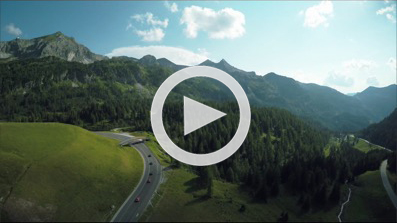 Driving in a beautiful car bespeaks privilege, freedom, privacy, and, especially in an open-top car, allows one to be in communion with the elements and natural beauty: soak up the sunshine, feel the wind in your hair, smell the fresh air and the scents of freshly cut grass. Besides, there is the sheer pleasure of being in control, of directing the course of travel: to turn, to go, to stop where and when you feel like it.
Driving in a beautiful car bespeaks privilege, freedom, privacy, and, especially in an open-top car, allows one to be in communion with the elements and natural beauty: soak up the sunshine, feel the wind in your hair, smell the fresh air and the scents of freshly cut grass. Besides, there is the sheer pleasure of being in control, of directing the course of travel: to turn, to go, to stop where and when you feel like it.
 These are pleasures that Europeans were the first to enjoy. Most evidently, these are pleasures that can be shared by couples. While it is often the gentleman who takes the driving seat, it was in fact Bertha Benz who undertook the first driving journey (with their two children) in the world. Driving journeys in a cabriolet are something that women have enjoyed ever since, whether as companion or driver.
These are pleasures that Europeans were the first to enjoy. Most evidently, these are pleasures that can be shared by couples. While it is often the gentleman who takes the driving seat, it was in fact Bertha Benz who undertook the first driving journey (with their two children) in the world. Driving journeys in a cabriolet are something that women have enjoyed ever since, whether as companion or driver.
 Add to this the many other delights of a driving holiday in Europe – private concerts or car museums, the dazzling sights of sparkling Alpine lakes, the smell of sweets freshly baked, a home-cooked meal in a restaurant in the middle of nowhere and time together with friends or family… a driving holiday in Europe is the perfect blend of sweet adventure and world-class comfort!
Add to this the many other delights of a driving holiday in Europe – private concerts or car museums, the dazzling sights of sparkling Alpine lakes, the smell of sweets freshly baked, a home-cooked meal in a restaurant in the middle of nowhere and time together with friends or family… a driving holiday in Europe is the perfect blend of sweet adventure and world-class comfort!
Visit our European journeys page for itinerary ideas. And remember: soon we will introduce our first scheduled, European journey for 2017.
